Do You Read Dna From 5' to 3'
I took 9 different Dna tests and here's what I institute
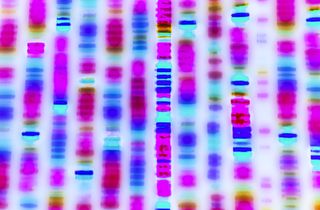
The affair about me is that I'm Jewish. It's not the just matter about me. I'm also v anxiety xi inches tall, a spectacles wearer and into bicycling. But most people who know me probably wouldn't be surprised to larn that most of my ancestors lived in shtetls in Eastern Europe.
So, it wasn't too surprising when I sent off ix DNA samples to three dissimilar Deoxyribonucleic acid companies nether a diverseness of fake names, and the results indicated that I'thousand super-duper Ashkenazi Jewish. (Ashkenazim are Jews who trace their beginnings back to Yiddish-speaking populations inhabiting the region betwixt France and Russia.)
Here'due south what was a bit surprising, though: None of the companies — AncestryDNA, 23andMe and National Geographic, which works with a testing company called Helix — could agree on but how Ashkenazi I am. [How Do Dna Ancestry Tests Really Work?]
Three companies, three errors and 6 different results
AncestryDNA
AncestryDNA looked at the beginning DNA sample that Alive Science sent in for me and reported dorsum that I'1000 93 percent "European Jewish." The residual of my ancestry, it suggested, is as follows: 2 percent traces back to the Iberian Peninsula (that's Spain and Portugal); 1 pct traces back to the "European South"; 1 percent traces back to the Heart East; and the rest comes from elsewhere.
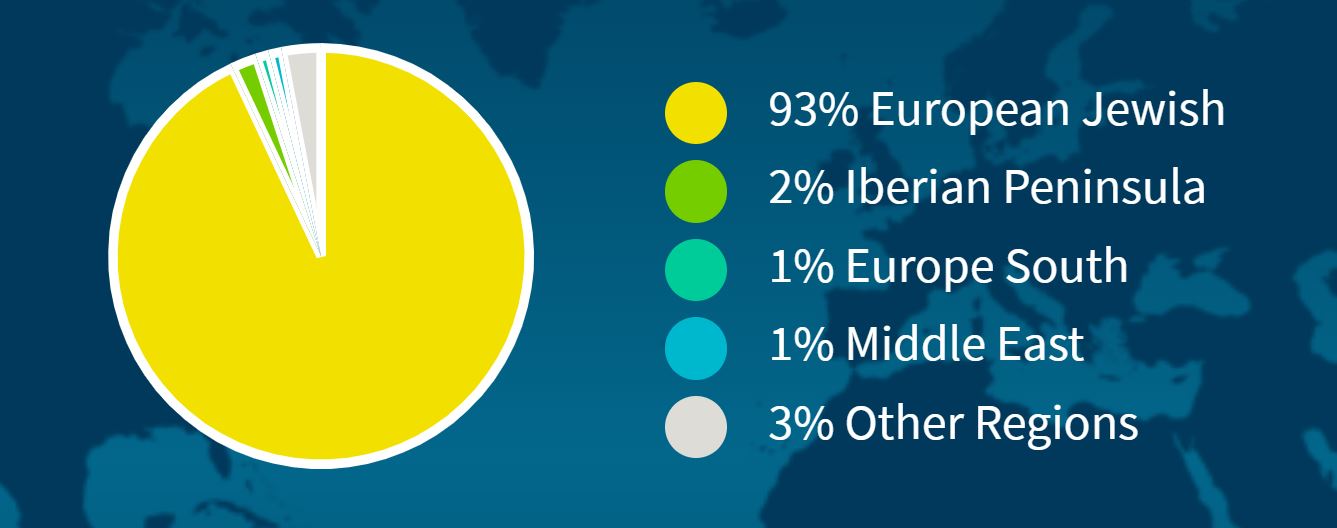
The second sample produced similar — though, interestingly, not identical — results. This scrap of Rafi-spit-in-a-tube, information technology reported, was only 92 percent Ashkenazi, but a full three per centum Iberian. The residual of the Deoxyribonucleic acid, according to Ancestry, may have traced back to the Eye East and European South or other regions. Merely each of those sources accounted for, at near, less than 1 percent of my DNA, co-ordinate to the site.
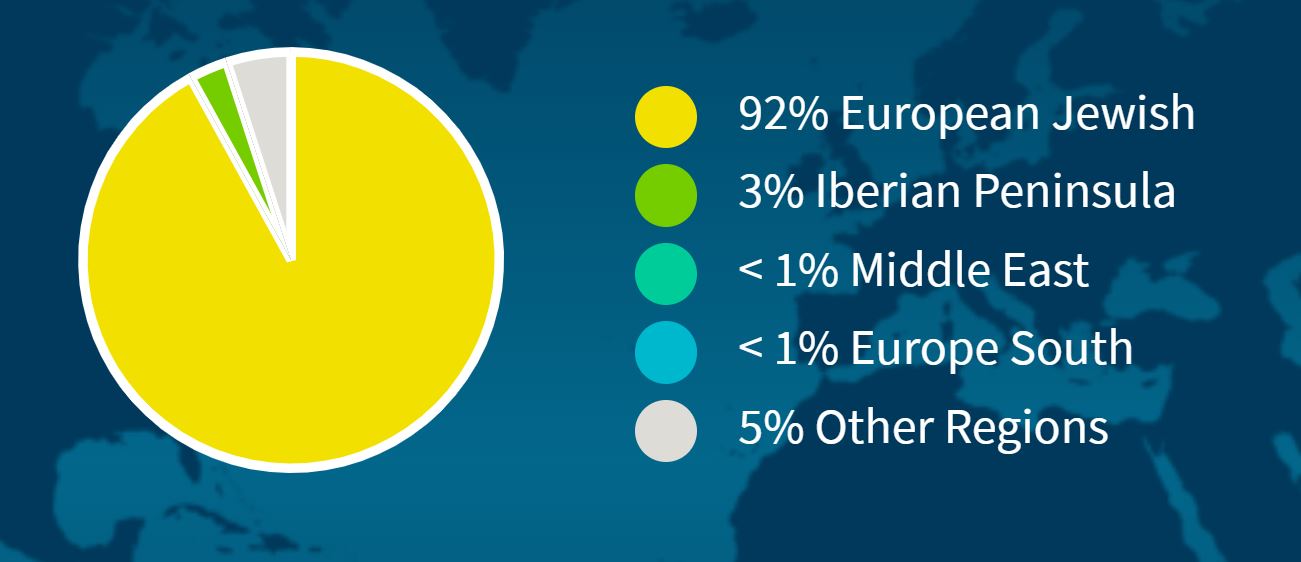
(Live Science sent a third sample of my DNA to Ancestry nether a 3rd name, but an error prevents us from accessing the results.)
23andMe
Like AncestryDNA, 23andMe concluded from the commencement Deoxyribonucleic acid sample that my Ashkenaziness ranks somewhere in the low 90s, with a smidge of difference between each of the samples it received. Unlike AncestryDNA, it had a non-entirely-Old Earth estimation of where my ancestors may accept come from — suggesting that peradventure a fraction of one percent of my ancestors were Native American. (Given what I know of my family unit history, this is almost certainly non true.)
However, while I was reporting on this story, 23andMe updated its system for interpreting Dna samples and reassessed all the Deoxyribonucleic acid already in its system. Now, when I log into 23andMe using the three different names I gave, the reports for two of those names say that I take 100 percentage Ashkenazi ancestry. [The Best Dna Testing Kits of 2018]
(A third sample sent to 23andMe has returned no results. Alive Scientific discipline assigned a woman's name to ane of the samples that it sent to each visitor and marked its sex activity as female person. AncestryDNA candy its "female" sample just fine, with no indication of anything unexpected, but both 23andMe and Nat Geo required more personal information before proceeding, since it was from a person with unexpected chromosomes.)
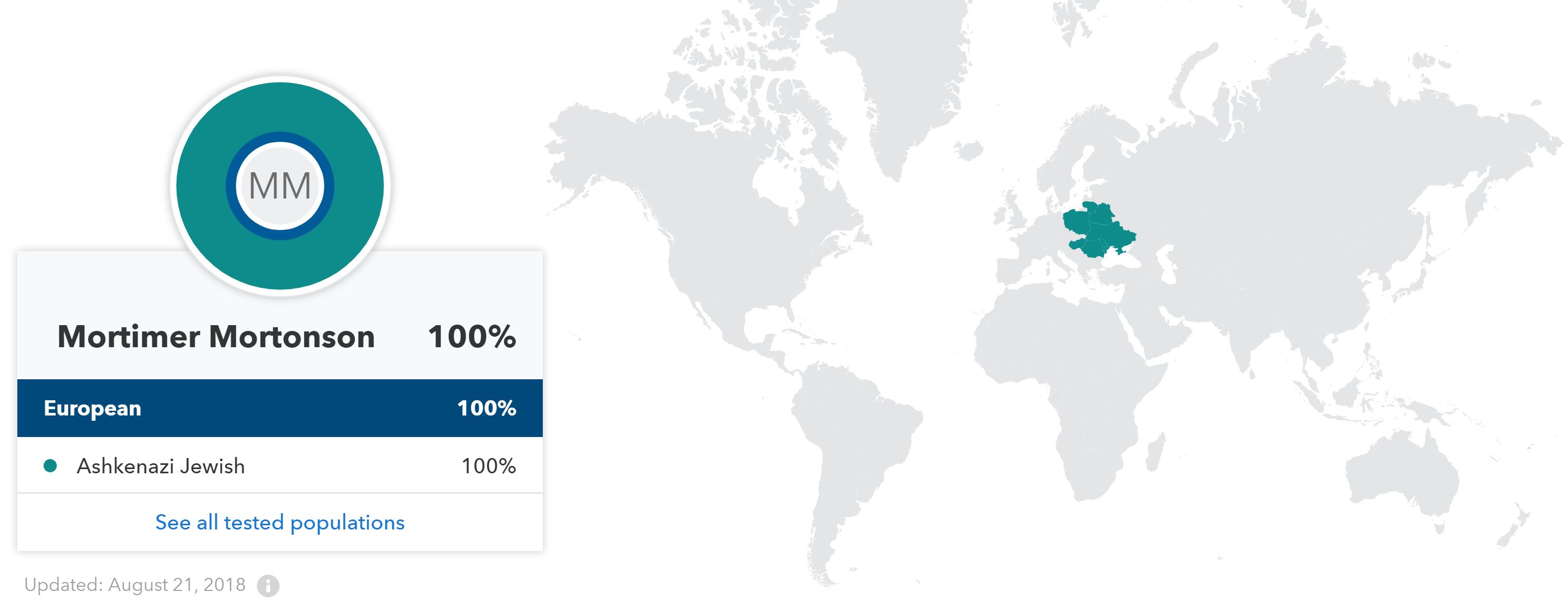
Nat Geo and Helix
Finally, there'due south Nat Geo, which uses a service called Helix to do its DNA testing. Helix handles the raw Dna processing, while Nat Geo handles the interpretation.
According to Nat Geo, I'1000 way less than 100 percent Ashkenazi. The genetic service reported that my start sample's ancestry was 88 percent from the "Jewish Diaspora" (in this context, a term that more or less refers to Ashkenazim) and x percent from "Italy and Southern Europe."

Nat Geo besides reported the biggest difference betwixt its ii successful samples, reporting that the 2nd sample information technology received was 3 percent less "Jewish Diaspora" than the first — simply 85 percent. The remainder, this time, was 13 per centum "Italy and Southern Europe."

Then, ix Deoxyribonucleic acid tests after, I learned this most myself: I'm a whole lot Ashkenazi Jewish. Similar, generally. Or entirely. The rest of my ancestors in contempo memory probably also lived in Europe — though who actually knows where. And maybe somewhere in my family unit tree in that location was a Eye Easterner, or a Native American. Simply probably (almost definitely) not.
But, of course, I already knew all that.
The Science
Scientists who specialize in this sort of research told Live Science that none of this is all that surprising, though they noted that the fact that the companies couldn't even produce consistent results from samples taken from the same person was a bit weird.
"Ancestry itself is a funny thing, in that humans have never been these distinct groups of people," said Alexander Platt, an proficient in population genetics at Temple University in Philadelphia. "So, you tin can't really say that somebody is 92.6 percent descended from this grouping of people when that's not really a thing."
Log onto a website like Nat Geo'southward and information technology chunks the earth up into different pieces. Some of your ancestors came from this spot, it says, and they were Central Asian. Others came from that spot over there, and they were Centre Eastern. But that'due south non what human being history looks like. Populations fuzz together. People move around, go together and separate. A person who calls herself an Italian today might take called herself a Gaul a couple grand years ago and gone to war confronting the Romans.
To split people into groups, Platt told Live Scientific discipline, researchers make decisions: For example, they'll say, the members of this group of people take all lived in Morocco for at least several generations, so we'll add their DNA to the reference libraries for Moroccans. And people who had one grandparent with that sort of DNA volition hear that they're 25 percent Moroccan. But that boundary, Platt said, is fundamentally "imaginary."
"There is structure to history," he said. "Certain peoples are more than closely related to each other than to other peoples. And [commercial DNA companies] are trying to create boundaries within those clusters. But those boundaries never really existed, and they aren't real things."
In some places this is easier. Non-Jewish European populations, he said, tended non to mix quite as much with others as people elsewhere in the world, and then companies tin can easily draw finer distinctions between them.
Only ultimately, it doesn't mean anything to be 35 percent Irish, or 76 per centum Finnish. So, when 23andMe changed its mind about my ancestry, the 100 pct answer wasn't more truthful. It was just another way of interpreting the information.
(In this example, Platt said, the company probably decided that since just about all Ashkenazi Jews take some genes in mutual with a mix of other European populations, it makes sense to call those genes Ashkenazi equally well.)
"It's not actually science so much as it'southward description," he said. "At that place isn't really a right or wrong reply here, because there is no official designation of what it ways to exist Ashkenazi Jewish genetically."
Information technology's not actually weird to him that at that place'due south a 15 percent Jewishness gap betwixt my results in Nat Geo and in 23andMe, he said.
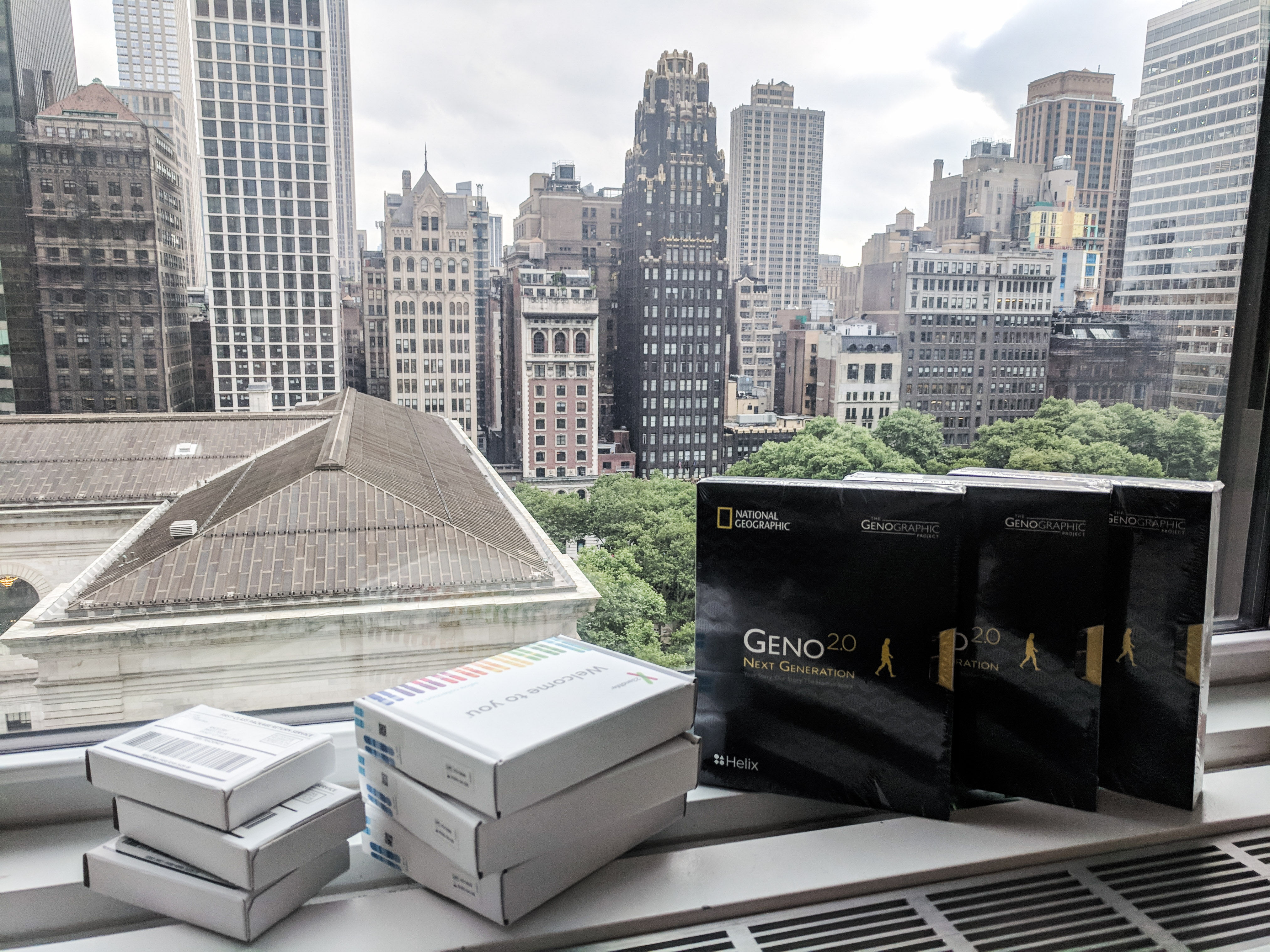
Mark Stoneking, a population geneticist and group leader at the Max Planck Institute for Evoluntionary Anthropology in Leipzig, Germany, agreed.
"If they were to be completely honest, what they should tell you is non that you're 47 percentage Italian but that you're 47 plus or minus some error range … based on their ability to distinguish this ancestry and other sources of mistake that get into the estimation," Stoneking told Live Scientific discipline.
And information technology's clear that in that location are sources of error, he said. Neither Stoneking nor Platt was sure exactly why AncestryDNA had a one percent difference between its results for unlike samples, or Nat Geo had a 3 percent departure, or 23andMe had wiggle room that disappeared with the update. Only they agreed that it likely has something to do with their methods for converting a vial of spit into data for the figurer to interpret. (Alive Science asked all 3 companies to explain the issue, but none gave a specific respond.) [Genetics: The Study of Heredity]
Each of these companies, Stoneking said, breaks down the DNA in the spit sample into alleles — genetic markers that they use as raw data. But that process is imperfect and conspicuously doesn't work the same style every time the companies run the rests, he said — though the errors aren't hugely meaning.
Should you get your Deoxyribonucleic acid tested?
None of this ways an ancestry kit from 23andMe or AncestryDNA or Nat Geo is worthless, Stoneking and Platt agreed.
"I view these things every bit more for amusement than anything else," Stoneking said.
The real scientific discipline of population genetics, he explained, is used to figure out how large groups of people moved and mixed over time. And it's good for that purpose. Just figuring out whether 3 to 13 percent of my ancestors came from the Iberian Peninsula or Italia isn't role of that project.
Platt said that he had gotten himself commercially tested, and that while he hadn't found anything surprising, it's always possible for someone to acquire something new and interesting — particularly if they're of non-Jewish European ancestry and vague on the details. A white not-Jew might acquire something specific and interesting about their groundwork, because their ancestors likely come from highly isolated reference populations on which the companies have lots of data. But folks from other places accept lower odds, only because the data from other places is more express, fuzzy, and difficult to interpret.
When I contacted the companies and asked them to comment on this story and to address the question of why my results may accept differed — even when the examination was performed by the same company — both Ancestry and 23andMe responded.
Here's what Beginnings said:
"We're confident in the science and the results that we give to customers. The consumer genomics industry is in its early stages merely is growing fast and nosotros tell customers throughout the experience that their results are as accurate equally possible for where the science is today, and that it may evolve over fourth dimension as the resolution of DNA estimates improve[south]. We will ever work to harness evolutions in science to raise our customers' experience. For case, contempo developments in DNA science allowed us to develop a new algorithm that determines customers' ethnic breakup with a college degree of precision."
And hither'due south the comment from 23andMe, which the representative requested Live Scientific discipline attribute to Robin Smith, a Ph.D. who holds the title of group project manager at the company:
"Our ancestry reports are a living analysis and are ever-evolving, and as our database grows nosotros volition be able to provide customers with more granular information nigh their beginnings and ethnicity. We are constantly making improvements to both our reference datasets, and the overall pipeline we use to compute customers' Ancestry Composition reports. In fact, we recently rolled out a comprehensive ancestry update earlier in the yr, increasing the countries and regions we report on — in social club to provide more in-depth information to populations that are underrepresented in the written report of genetics.
"In regards to the Ashkenazi reference populations, our precision for calling AJ [Ashkenazi Jewish] ancestry, has indeed improved from 97 percent to 99 per centum over the past two years for these reasons. Our call back, meaning of all the Ashkenazi Jewish ancestry in the dataset, how much do we call AJ has improved to 97 per centum, up from 93 pct 2 years ago.
"At that place may be inconsistencies across Deoxyribonucleic acid ancestry tests due to differing algorithms and reference panels that differ in primal respects."
Nat Geo did not answer to multiple requests for comment by printing time.
Originally published on Live Science.
Source: https://www.livescience.com/63997-dna-ancestry-test-results-explained.html

0 Response to "Do You Read Dna From 5' to 3'"
Post a Comment